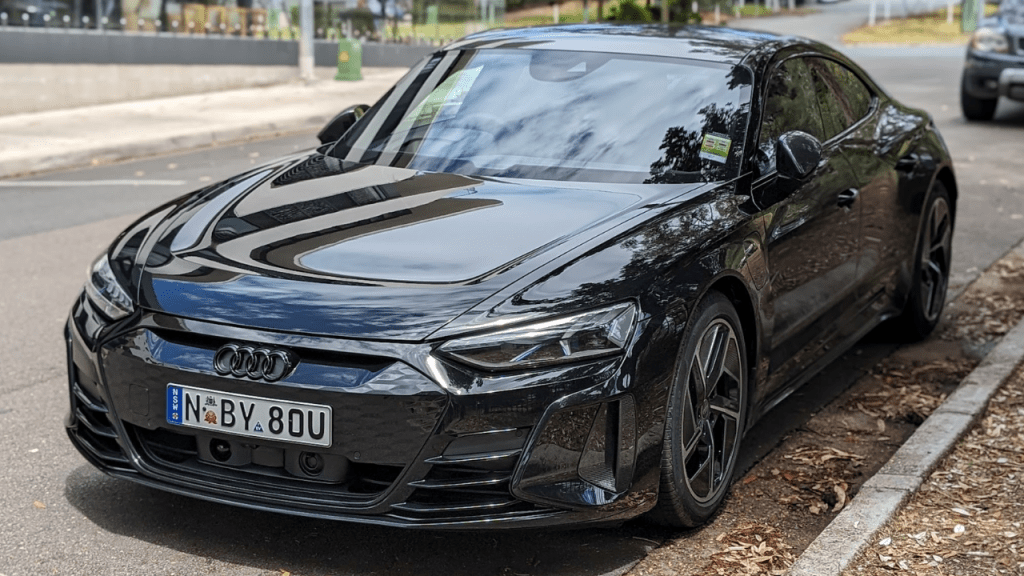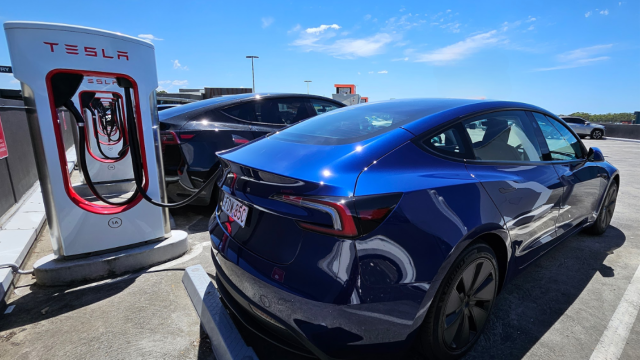Australia’s New Vehicle Efficiency Standards, or NVES, were sent to the Australian Parliament today, after a month-long consultation period, and a year of hearing from stakeholders.
The new rules are poised to bring operating costs of petrol-fueled cars down by making them more efficient, by forcing automakers to bring more efficient vehicles down under, however, the policy has been tweaked to be more accommodating of the demands from major car industry stakeholders, and as such, some heavy vehicles are being reclassified as light commercial vehicles, and are therefore dodging the most restrictive emissions rules.

What’s happening with Australia’s new fuel rules?
We’ve been writing about these new rules for years now. It’s not a ute tax, nor are you being forced to buy an EV. Australia is bringing its auto sector emissions into line with the rest of the world. Every other OECD country has these rules, but not Australia (Russia didn’t either, but it was suspended from the OECD). Broadly speaking, the new rules will lead to vehicles that burn fuel more efficiently and therefore cost less to run. The rules will also incentivise companies to bring more EVs and PHEVs to Australia.
Today, arguments for the NVES have begun in the Australian Parliament, with the hope that rules will be adopted and put in place by January 1, 2025. The bill has been submitted as the ‘New Vehicle Efficiency Standard Bill 2024’.
In the consultation paper put out by the Australian Government, three options of intensity were outlined, varying in how long it would take to meet certain emission thresholds. In a release, The Australian government says it plans to introduce fuel rules that will reduce emissions of passenger vehicles by up to 60 per cent by 2030, which is most in line with the middle-of-the-road ‘Option B’ approach, outlined in February.
However, there’s a serious caveat to that, as some vehicle classes won’t be forced to comply with the 60 per cent target, and will instead need to comply with a 35 per cent target reserved for commercial vehicles, per AAP. Previously, Option B would have seen light commercial vehicle emissions capped at 81 CO2 grams per kilometre by 2029, but this has been relaxed to 110.
It’s effectively a compromise for certain automakers.
The reclassified vehicles include the Toyota Hilux ute, the Nissan Patrol, the Toyota Landcruiser, the Mitsubishi Pajero, the Ford Everest and the Isuzu MU-X. “This acknowledges that some off-road wagons use similar ladder-frame chassis, and need comparable towing capacity above 3 tonnes, to dual cab utes,” noted the Federal Minister for Infrastructure, Transport, Regional Development, and Local Government Catherine King.
“This constructive collaboration is delivering what’s right for Australia, by making improvements to the consultation option to deliver more choice of cheaper-to-run cars for motorists, while ensuring a sustainable and effective standard,” she said.
The minister claims that the emissions reduction trajectory of light commercial vehicles has been made more smooth, in line with recent changes to emissions standards in the United States.
According to The Guardian, the new policy will cut 321 million tonnes of CO2 by 2050, while the Government’s preferred model, unveiled last month, would have cut 369 million tonnes.
The standards are planned to officially commence from January 1, 2025, however, automakers will be unable to earn and trade emissions credits until July 1, 2025, and penalties will not apply during that period.

What do stakeholders think of the new fuel rules?
The Federal Chamber of Automotive Industries, the group representing automotive companies in Australia, has welcomed the NVES, and is celebrating the tweaks made to them, but also has some issues with it.
“However, we continue to have concerns about the impending challenges facing industry and motorists,” the chamber said in a statement. It is calling for the full policy to be released, including modelling. Two weeks ago, Tesla and Polestar made headlines by dramatically leaving the chamber, accusing it of deliberately trying to slow the industry’s contribution to emissions reduction.
Beyond representing traditional automotive businesses, there are more stakeholders at play with the NVES, in particular, EV advocates and environmental groups.
“This is a big victory for Australian consumers who want more access to the fuel-efficient cars and EVs available right around the world – now and into the future. Yes the LCV [light commercial vehicle] target has been weakened from the proposed standard and I’d rather they weren’t, but let’s not snatch defeat from the jaws of a big victory,” Australian Electric Vehicle Council CEO Behyad Jafari on Twitter in a thread.
“Yesterday, we had no standards and now we’re getting a strong one. That absolutely wouldn’t have happened without hard work and Australians enthusiasm for EVs ramping up over recent years.”

Environmental groups are obviously unhappy with the reclassification of vehicles under the NVES, such as the Hilux, to the light commercial vehicle category.
“The decision to weaken the standards when it comes to Light Commercial Vehicles will mean around 20 per cent more carbon pollution will be allowed by 2030 compared to the original proposal – so we expect the Government will be looking at other options for reducing pollution from transport in order to meet their climate targets,” Greenpeace said in a statement.
“Re-classifying luxury SUVs, like the Lexus LX, as a ‘light commercial vehicle’ doesn’t pass the pub test, and is clearly a concession to automakers who earn their biggest profits from massive cars, but we are pleased to see the overall pollution reduction goals of the scheme are intact, which the Government should be commended for.”
Solar Citizens CEO Heidi Lee Douglas said the legacy car industry stalwarts should stop blocking the industry’s progression.
“The Federal Government has listened to various stakeholders and made sensible concessions in the new draft. Now the vested interests of the legacy car industry should get out of the road and stop blocking the best interests of Australian motorists who want the cost of living savings and health benefits the fuel efficiency benefits the new standard will deliver.”
It’s expected that the rules will begin from January 1, 2025, though Parliament is yet to vote on the bill.
Image: Zachariah Kelly/Gizmodo Australia
